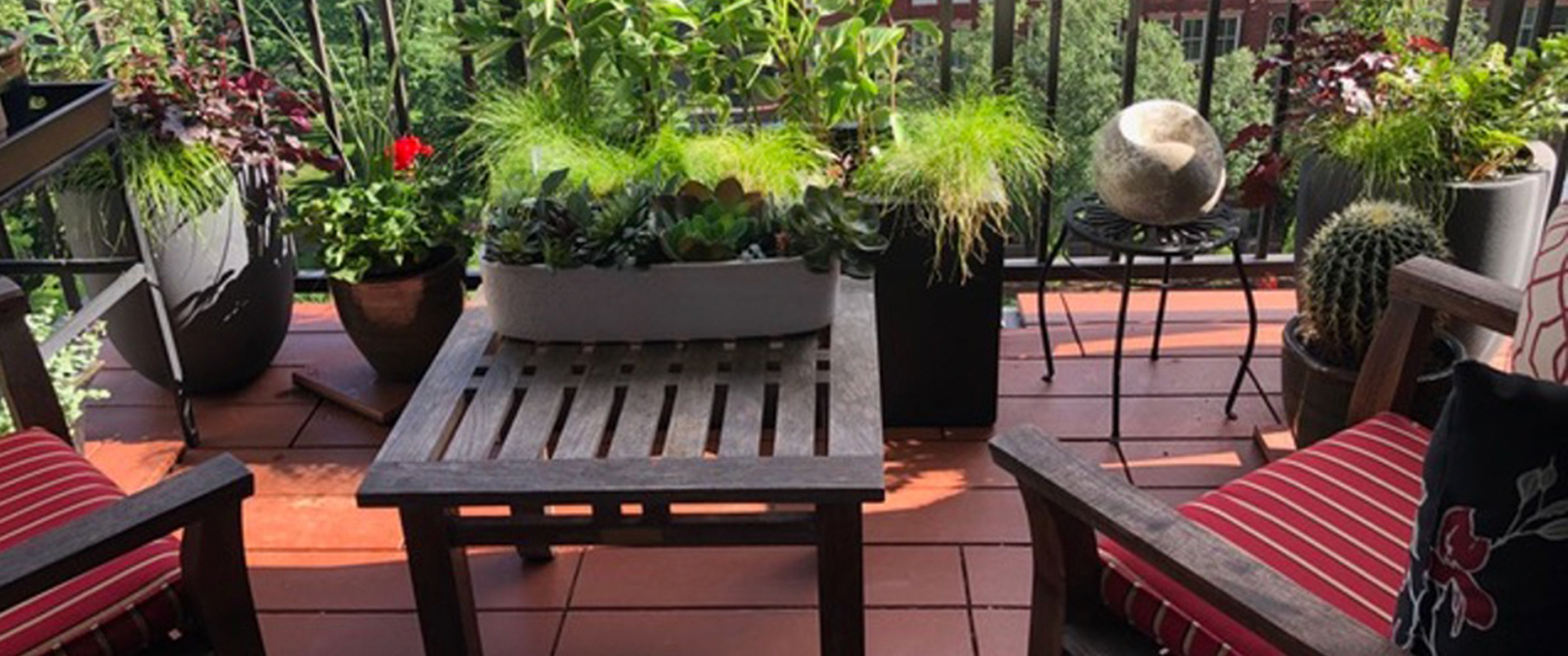The following information on balcony planting comes from a team of people whose residences are located in a Philadelphia high-rise condominium. If you enjoy apartment or condominium living and have a porch, this information might be helpful for making your outdoor space even more inviting.
Plans
For planting on a small balcony, native plants are recommended because they adjust to our climate extremes, require less water, do not have to be replaced during the season like hot-house plants, and they will often winter over if you water them until mid-December. These plants also mix well with some seasonal annuals.
Check out the links below for ideas on plant types for small patios & container gardens. Just be sure to look for plants in Zone 7.
- “10 Plants for Year-round Containers”
- Container Gardens Plans & Ideas
- Plant Finder for patios & container gardens - Choose “zone 7” and adjust the type of sun exposure
- Online Nursery specializing in native plants
- Rosebud Native Plant Nursery – a local nursery located in Media, PA
Plants
Sustainable plants mix well with annuals such as Geraniums, Pansies, Impatients, Petunias, Begonias, Cannas, Calibrachoas, Mecardonia, e.g. for more blooms. Some will winter over or may be brought inside.
To extend bloom times on plants, pull off dead blossoms, known as “deadheading,” and leave stalks of perennials to dry naturally. These provide food for insects and the plant itself for the next season. If the brown bothers you, plant others to cover them or fold them over and secure with rubber or elastic bands.
During the last year, several of the residents tried experimental balcony plants. They found the following were successful:
Sun
Eastern prickly pear cactus; Goldenrod; Nodding onion; Hyssop; Aromatic aster
Shade
Christmas fern, Cardinal flower (prefers both some morning and afternoon sun); wood aster; grasses such as bottlebrush and sedge (depends on wind)
Both
Coral bells (water in the morning to avoid sunburn)
Others (depending on sun and wind exposure)
Eastern columbine, Rosa carolina, Solidago nemoralis, Heuchera, Digitalis, Elymus
Containers
Practitioners tell us that they often use lightweight plastic containers with drainage holes, which can be punched in if they are missing. Containers with drainage holes will not dry out as quickly as terracotta pots and are still attractive. Balconies must be inspected every five years, so containers need to be moveable. Rocks, or even a brick in the bottom of small containers will keep the containers from blowing over.
Water
Many of these plants do not need excessive amounts of water. Often, overwatering can kill them, but if plants are located in a sunny location, they will need to be monitored. Plants usually will let you know what they need, as evident through wilting or withering. The rule is to wait 24 hours before watering because they may just be hot. On the 2nd day if they are still wilting, give them a little more water. However, it is important to be careful with water ponding under containers, even with saucers, as water contact with the balcony surface will cause deterioration in concrete and rebar. Elevate pots with bricks, stands, clay pots, interesting objects – whatever you have. You can buy clay “legs” at Loewe’s or Home Depot.
Soil
Organic potting soil and cactus mix are great types of soil to use. Miracle-gro and other brands work well also. Just avoid anything with peat—it is not sustainable and needs to stay in our global peat bogs! You can purchase these products at Loewe’s, Home Depot, 10th St. Hardware store or online.
For more information on anything mentioned in this article, contact





